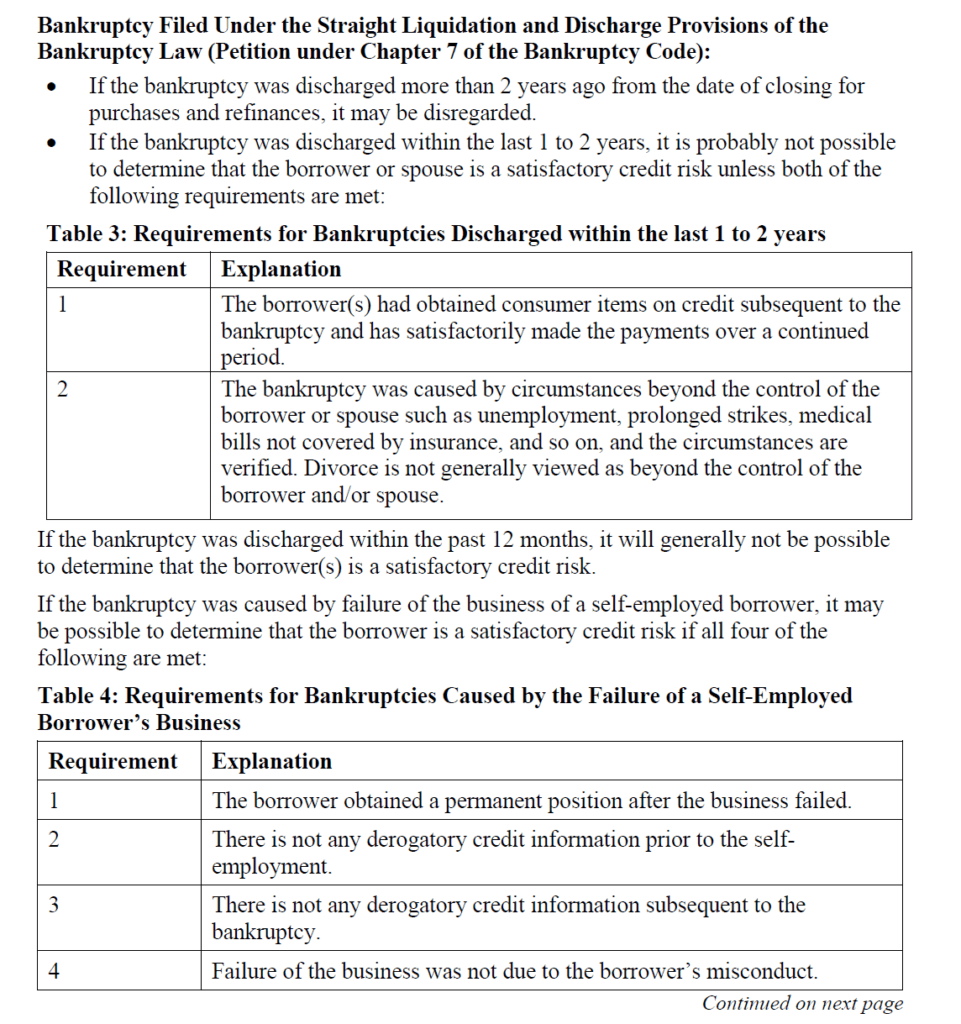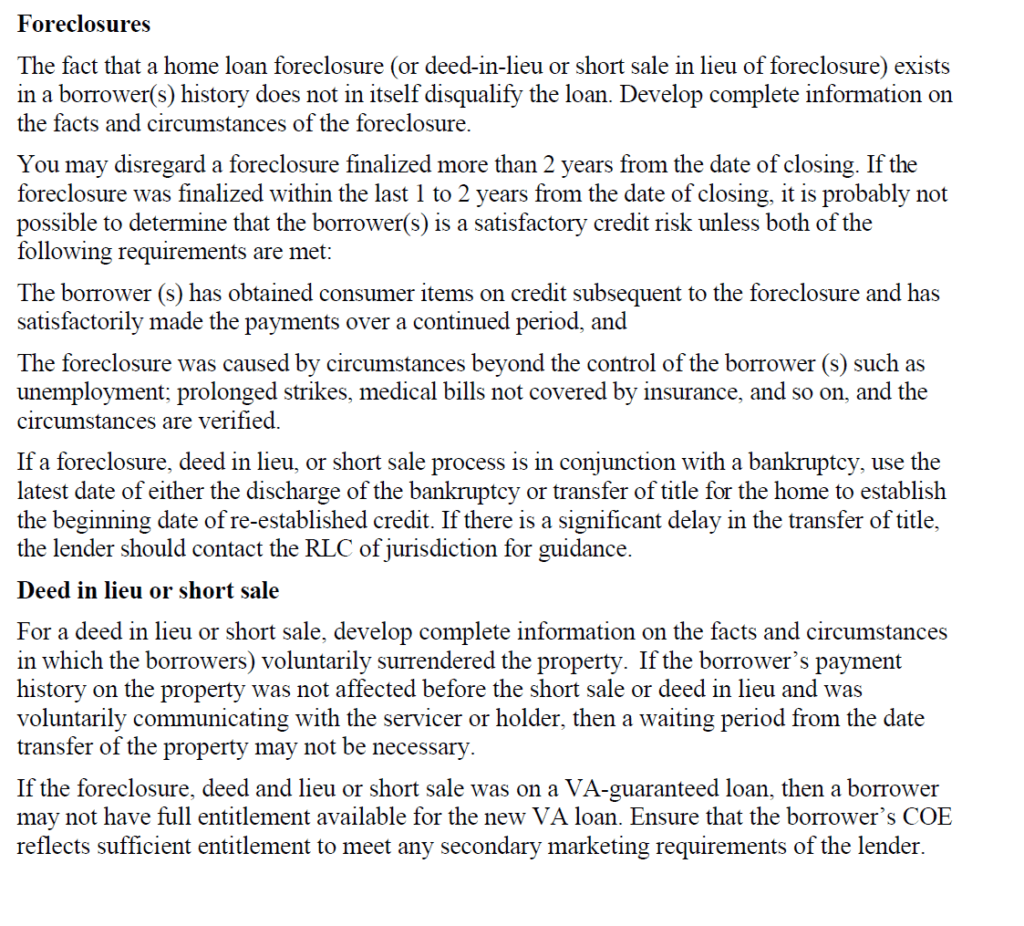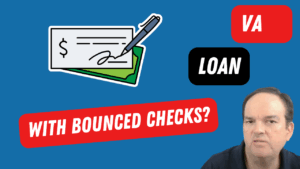
Credit Utilization: The #1 Mistake That Hurts Your Score
Credit Utilization: The #1 Mistake That Hurts Your Score Guest post by Sam Parker at MyCreditGuy Table of Contents Key Takeaways Understanding Credit Utilization: Why
Carlos Scarpero- Mortgage Broker
| Guideline | Key Takeaway |
|---|---|
| Minimum Credit Score | No official VA minimum, although many lenders will set their own minimum standards |
| VA Flexibility | VA allows manual underwriting for lower scores with compensating factors |
| Recent Payment History | Last 12 months of on-time payments crucial for approval |
| Alternative Credit | Rent, utilities, and insurance payments can be used if traditional credit is limited |
| DTI Ratio | Higher DTI ratios may be accepted with strong compensating factors |
| Compensating Factors | Substantial savings, stable employment, or disability income can offset credit issues |
| Post-Bankruptcy/Foreclosure | Possible to qualify after 2 years or 1 year with extenuating circumstances. This is shorter than other loan types |
| Credit Improvement | Some lenders offer credit counseling to help veterans boost scores |
| Interest Rates | Lower credit scores may result in slightly higher interest rates |
| Lender Variation | Requirements and flexibility vary by lender; shop around for best options |
Did you know that over 25% of Americans have bad credit?
Sadly, many of these Americans are veterans and are being needlessly being turned away for VA home financing.
If this is you, you’re in luck because I’m going to show how it is possible to get approved for a VA home loan with poor credit.
The VA loan is extremely flexible, and VA guidelines state that they want as many veterans as possible to get approved.
But, there are a few things you need to keep in mind. The VA does not write the loan. They just write the ground rules and the mortgage insurance. The VA is not a lender.
However, you need to be aware of lender overlays. A lender overlay is where a lender creates a rule on top of what the VA says.

There is no minimum credit score to get approved for a VA home loan.
Each lender sets their own minimum standards for approval.
Some lenders are true “no overlay lenders” and have no minimum credit score.
Other lenders set a score minimum. Some might set that at 500. Others might set it at 580 or 620.
Believe it or not, I’ve even gotten veterans approved with scores in the 400’s. It’s rare, but it can happen.
That doesn’t mean everybody can get a VA loan. It simply means that there is a lot of flexibility in getting approved.
VA does not allow recent late payments on rent or mortgage. Specifically:
Rent: No late payments or evictions in the past 2 years.
Mortgage: No late payments in the past 1 year.
These waiting periods can be waived in cases of extenuating circumstances — such as a job loss, medical emergency, or an inability to sell a previous home.
Here’s how various types of collections may affect your ability to get approved for a VA loan:
Generally not a problem.
Can remain open without affecting approval significantly.
These will likely lower your credit score, but most underwriters overlook them due to the nature of healthcare billing.
These must be resolved before approval.
Active collections here can lead to wage garnishment and are taken very seriously by lenders.
Collections within the past year are usually disqualifying.
If more than a year old, approval is more likely.
Extenuating circumstances may help, but without them, lenders tend to pass.
Must be in a payment plan.
You don’t have to finish paying it off before approval, but you do need a formal agreement in place.
Must be brought current before approval.
Lates in the past 12 months are typically deal-breakers for lenders.
Recent late payments (within 1 year) will likely hurt your chances.
These suggest ongoing financial instability.
Often depend on lender interpretation.
Small balances (like $50-$200) from disputes (e.g., T-Mobile or cable bills) may be overlooked.
A good letter of explanation and strong overall application can help.
One confusing area is how old a collection is considered to be. For example, if a debt was sold to multiple collection agencies over time, some lenders may look at the original date, while others may go by the most recent transfer date. This is another reason to work with someone who understands underwriting variance and can shop around.
One of the great benefits of the VA home loan program is the fact that it allows for extenuating circumstances.
Extenuating circumstances are things that are beyond your control that caused the delinquency. If extenuating circumstances exist, the lenders will be a lot more flexible with your mortgage approval.
Extenuating circumstance guidelines are discussed in Chapter 4 of the VA Handbook.
Some allowable extenuating circumstances are:
If your credit took a hit because of your divorce but the negative event occurred over a year ago, good news — you’re likely in the clear. The VA generally only looks back one year on credit issues, as long as everything is now resolved.
If the credit issue happened within the last year, things get more complicated — but not impossible.
The VA allows some exceptions to the one-year rule under what they call extenuating circumstances. But here’s the catch: divorce by itself does not qualify. However, specific situations resulting from a divorce might.
Here are a few scenarios:
✅ Accepted as Extenuating Circumstances:
Safety-related child custody cases: For example, if a parent had to miss work for court due to concerns about abuse or medical neglect by the ex-spouse, this may qualify.
Court-ordered debts that the ex-spouse didn’t pay: If your ex was supposed to take over a debt (like a car loan) after the divorce — and it’s clearly stated in your divorce decree — you might be able to exclude that debt from your credit consideration, even if it’s negatively impacting your score.
❌ Not Considered Extenuating Circumstances:
Being overwhelmed by high alimony or child support.
Going into debt to pay divorce lawyers.
Custody battles that are not safety-related (like disagreements over visitation time).
Credit damage caused by your ex before the divorce, if you never removed your name from joint accounts.
If you have a Chapter 7 Bankruptcy, you will need to wait two years since the date of discharge.
This can be lowered to one year if you have qualifying extenuating circumstances or the bankruptcy is the result of a failed business venture.
Here is the exact wording from the VA Handbook.

Source: VA Handbook, Chapter 4
If you are in a Chapter 13 Bankruptcy, you may be eligible for VA home loan approval if at least 12 payments have been made in the bankruptcy or the bankruptcy has been discharged.
Debt settlement plans follow Chapter 13 Bankruptcy guidelines.
Here is the exact wording from the VA Handbook.

Source: VA Handbook, Chapter 4
The following video gives more info about the rules about getting a VA loan after a business bankruptcy if you are the business owner.
If you have a foreclosure, you will need to wait at least two years after the deed transfer date to be eligible for VA financing.
This waiting period can be reduced to one year if you have extenuating circumstances.
If the loan that was foreclosed on was a VA loan, you will need to settle that charged off debt with the VA or it will be charged against your available entitlement.
If you are in this situation, please reach out to me because I can help you get the charged off foreclosure settled for pennies on the dollar.
Here is the exact wording from the VA Handbook.

Source: VA Handbook, Chapter 4
There are two different types of underwriting available for VA home loans. There is automated underwriting, and then there is manual underwriting.
Automated underwriting is the preferred method because it’s a simpler process. During automated underwriting, I submit the file to the automated underwriting system or the AUS.
The software gives an “approved eligible” response or a “refer” response. If it is “approved eligible”, then the underwriter simply looks to make sure that the supporting documentation submitted matches what the AUS asked for.
Sometimes the AUS software gives a “refer” response. In those cases, we can use manual underwriting instead. Manual underwriting is where a human underwriter determines if the file meets VA guidelines for approval.
Manual underwriting is really interesting on the VA side because the VA is super flexible with what they allow.
The VA Handbook says “underwriters are encouraged to consider every possible factor in seeking a proper basis for approving loan applications for every qualified veteran, as long as lenders document their reasoning, it is extremely unlikely that VA staff would ever take issue with their decision”.
That being said, lenders don’t want to just randomly say, “Well, this person is approved, this person is not.”
Lenders also set their own manual underwriting guidelines to have a fair and consistent policy for everyone.
The VA sets the manual underwriting guidelines intentionally vague and each lender sets their own overlays on manual underwriting.
For example, even though the VA says that delinquencies that have been added within the past year are allowed on a manual underwrite, I do not know of a single lender that will allow them.
Some lenders will allow for delinquencies in the past year if there are extenuating circumstances but each lender interprets the extenuating circumstance guideline slightly differently.
Additionally, every lender will ask for a letter of explanation detailing why the accounts went delinquent and how that has been resolved.
Even though the VA does not have a minimum credit score for manual underwriting, most lenders will set minimum credit scoring guidelines. I know of a few lenders that do not have a minimum credit score, but that’s rare. Most set the minimum score for VA manual underwriting at 580 or 600.
This is one of the huge advantages that I have as a full service mortgage broker. I can go through the lender guidelines and play the lenders against each other. This helps us determine which mortgage lender can best suit your needs.
One thing that will get examined very closely on a VA manual underwrite is the debt ratio. Lenders want to be assured that you have the ability to repay the loan.
The debt ratio is defined as your debts divided by your income.
For example, if you are making $4000 a month in gross income before taxes, and have $2000 a month in debts, you have a 50% debt ratio.
It can be hard to get a manual underwrite approved with over a 50% debt ratio. I’ve seen one lender that goes to 65%. And even that’s in very special cases only.
Another factor that the underwriter will look at pretty closely on any VA loan, but especially on the manual underwrite is residual income.
Residual income is defined as your take-home pay, minus the mortgage payment, including taxes and insurance, minus the HOA dues, minus expected utilities on the new property, minus monthly minimum payments on all other debts, minus anything owed for alimony or child support minus child care expenses.
One thing that’s unique with VA loans is the child care expense requirement. Other loan programs do not factor this expense in for their underwriting.
The reason the residual income requirement is so important is because it’s seeing what you have available to spend for your family. Per the VA Handbook, there are minimum residual income requirements that must be met for VA mortgage approval.
Here is the current 2024 residual income chart.
| Region | States Included |
|---|---|
| Northeast | Connecticut, Maine, Massachusetts, New Hampshire, New Jersey, New York, Pennsylvania, Rhode Island, Vermont |
| Midwest | Illinois, Indiana, Iowa, Kansas, Michigan, Minnesota, Missouri, Nebraska, North Dakota, Ohio, South Dakota, Wisconsin |
| South | Alabama, Arkansas, Delaware, District of Columbia, Florida, Georgia, Kentucky, Louisiana, Maryland, Mississippi, North Carolina, Oklahoma, South Carolina, Tennessee, Texas, Virginia, West Virginia |
| West | Alaska, Arizona, California, Colorado, Hawaii, Idaho, Montana, Nevada, New Mexico, Oregon, Utah, Washington, Wyoming |
| Family Size | Northeast | Midwest | South | West |
|---|---|---|---|---|
| 1 | $390 | $382 | $382 | $425 |
| 2 | $654 | $641 | $641 | $713 |
| 3 | $788 | $772 | $772 | $859 |
| 4 | $888 | $868 | $868 | $967 |
| 5 | $921 | $902 | $902 | $1,004 |
| Over 5: Add $75 for each additional member up to a family of seven | ||||
| Family Size | Northeast | Midwest | South | West |
|---|---|---|---|---|
| 1 | $450 | $441 | $441 | $491 |
| 2 | $755 | $738 | $738 | $823 |
| 3 | $909 | $889 | $889 | $990 |
| 4 | $1,025 | $1,003 | $1,003 | $1,117 |
| 5 | $1,062 | $1,039 | $1,039 | $1,158 |
| Over 5: Add $75 for each additional member up to a family of seven | ||||
Add $75 for each additional member up to a family of seven
For example, if the loan amount is $80,000 or above and in the Midwest you will need $441 a month in residual income.
If it’s a family of 5 this requirement becomes $1039 a month.
Source: VA Handbook Chapter 4
If getting a VA manual underwrite, your residual income will need to be at least 20% above the VA minimum standards.
Compensating factors are strengths in your financial profile that can help balance out areas of concern. The VA explicitly states that these factors must go beyond normal program requirements. For example, while a “good” credit score of 650 may not compensate for low residual income, an “excellent” score of 800 might.
VA lenders consider several compensating factors, including:
Let’s say your DTI ratio is slightly higher than the recommended 41%. In this case, having substantial liquid assets or an excellent credit score could help offset this concern. Underwriters analyze your loan file based on the three C’s: Credit, Capacity, and Collateral. Compensating factors can strengthen your profile in these areas.
Compensating factors become particularly crucial in manual underwriting scenarios. For instance, some VA manual underwriting guidelines allow for higher DTI ratios (up to 50% back-end DTI) if the borrower has at least two strong compensating factors.
It’s important to note that there are also negative factors that can hurt your application:
These negative factors can outweigh positive compensating factors, so it’s crucial to maintain a clean financial record.
To improve your chances of approval:
When it comes to VA loans and bad credit, misinformation is everywhere. Many veterans hear that “VA loans don’t have a minimum credit score” and assume that means everyone is approved. Unfortunately, that’s not the case.
Let’s clear up a few common myths and lay out a realistic path to getting approved for a VA loan—even with past credit issues.
While the VA doesn’t set a minimum credit score, lenders still apply their own criteria. This helps prevent foreclosures and ensures veterans succeed as homeowners.
Getting current on payments is important, but recent late payments still matter. Lenders will want to see that time has passed and the issues have been resolved.
Your payment history is more important than your score. For example, someone with a 476 credit score but clear documentation of a temporary hardship (like a serious medical issue) may get approved, while someone with a 575 score and a recent credit card default might not.
The VA does allow for exceptions, but only with solid proof. Situations like serious illness or job loss that led to missed payments can help—but you must show they directly caused the issue and that they’ve been resolved.
Time is on your side. Many credit issues can be overlooked after 12–24 months, and reputable credit repair services can sometimes help remove negative items even sooner.
The following table shows the differences in minimum standards of VA home loans vs other mortgage types.
Lenders may add their own standards (also known as lender overlays) over and above the guidelines listed.
| Type of loan | Minimum credit score | Waiting period after Chapter 7 bankruptcy (without extenuating circumstances) | Waiting period after foreclosure (without extenuating circumstances) |
|---|---|---|---|
| VA | No minimum score requirement | 2 years | 2 years |
| FHA | 500 to 579 (with a 10% down payment) 580 (with 3.5% down payment) | 3 years | 3 years |
| Conventional | 620 | 4 years | 7 years |
| USDA | No minimum score requirement | 3 years | 3 years |
Here are some frequently asked questions about VA home loans and bad credit.
Yes, it is possible to get a VA loan with bad credit. The Department of Veterans Affairs (VA) doesn’t set a minimum credit score requirement. However, most lenders have their own credit score minimums, typically around 620. Some lenders may approve loans for borrowers with scores as low as 580 or even 500.
While definitions vary, FICO scores below 580 are generally considered “poor” credit. Scores between 580 and 669 are often labeled as “fair” credit. However, many VA lenders consider scores below 620 as challenging.
No, the VA itself doesn’t set a minimum credit score. The VA focuses on the overall loan profile rather than just the credit score. However, individual lenders typically have their own minimum credit score requirements.
A lower credit score can lead to a higher interest rate on your VA loan. Lenders typically view higher credit scores as indicative of lower risk, often resulting in more favorable interest rates.
Yes, it’s possible. If you don’t have a traditional credit score, VA lenders can use alternative credit data such as rent, utility, car insurance, and other payment histories to make an approval decision.
The VA loan program is more forgiving of past financial difficulties than conventional loans. You may still qualify for a VA loan after bankruptcy or foreclosure, although there is a two year waiting period.
To improve your chances:
Some lenders market themselves as options for “bad credit” VA loans. However, be cautious and carefully review the terms, as these loans may come with higher costs or fees.
VA lenders also look at:
Yes, VA lenders may consider compensating factors to strengthen your application. These can include:
While it can be more challenging, it’s not impossible. The VA loan program is generally more flexible than conventional loans, especially for veterans with financial challenges.
The best place to get approved for a VA home loan with bad credit is through a mortgage broker.
I can originate VA mortgage loans anywhere that I’m licensed.
I’m licensed in Alabama, Arkansas, Arizona, California, Colorado, Florida, Georgia, Illinois, Indiana, Iowa, Kansas, Kentucky, Louisiana, Maine, Maryland, Michigan, Minnesota, Mississippi, Missouri, New Mexico, North Carolina, Ohio, Oklahoma, Oregon, Pennsylvania, South Carolina, Tennessee, Texas, Utah, Virginia, Washington, and Wisconsin.
Additionally, our team can originate mortgages in several additional states through our corporate referral program.
Those are some basic standards for no credit and bad credit VA loans.
As always, if you have any questions or comments or concerns, please feel free to contact me.

Credit Utilization: The #1 Mistake That Hurts Your Score Guest post by Sam Parker at MyCreditGuy Table of Contents Key Takeaways Understanding Credit Utilization: Why

Can You Get A VA Loan With Bounced Checks? Table of Contents Key Takeaways Introduction Understanding the VA Handbook and Bounced Checks Lender Overlays and

VA Reno vs 203k: Which Renovation Mortgage Program Is Best? Table of Contents Key Takeaways What Is a Renovation Mortgage? The VA Renovation Loan: Benefits